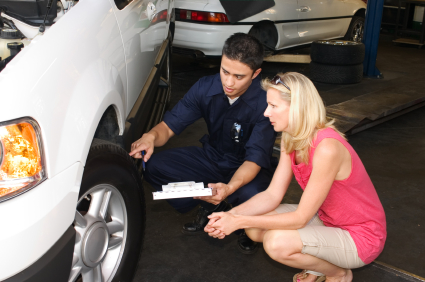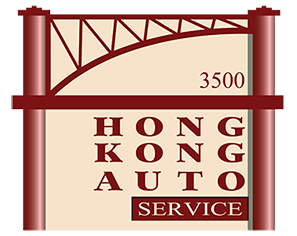Lease return checklist: Save hundreds by addressing potential penalty items ahead of time

Have your leased vehicle inspected at least 60 days prior to your turn-in date. This can help you catch, and repair, items ahead of time vs. being charged upon lease termination.
Leasing a vehicle can be a great decision if you receive an attractive deal—one where you put little money down and receive low monthly payments. When it’s time to return your vehicle, what was once a great deal can sour quickly if you violate the lease company’s excessive wear and tear policy.
While we all know exceeding the lease’s mileage allowance is a costly proposition, identifying “excess wear and tear” is a little more subjective and varies from one leasing company to another. The best advice we can give you is to read your lease agreement, which will detail your leasing company’s wear-and-tear policies. But to get you going in the right direction, we’ve compiled a checklist of common “watch for” items.
Exterior Condition:
- Dents and dings: Holes in the sheet metal or larger dimples, dents or dings. Some companies will charge you for anything more than 1 inch in diameter; others 2 or 3 inches. Some also specify how many dings or dents you can have per body panel and per side.
- Chips, scratches and broken paint or rusted areas: Some wear and tear is expected, such as a few chips from road debris and highway driving. Larger or excessive amounts of chipping will cost you.
- Scratches: Surface scratches that can be buffed out are generally OK. If neighborhood hoodlums keyed a design into your door panels, you’ll want to seek out some help before turn-in day.
- Special Note: If you leased a pick-up truck, consult your lease agreement for specifications about scratches to the pick-up bed, top rails and inside of the tailgate.
- Paint and body repairs:
- Collision repairs have not been completed
- Substandard paint jobs have left the paint peeling, bubbling, or mismatched. Also watch for excessive overspray, visible sanding or grind marks.
- Collision repairs do not meet factory specifications or affect the vehicle’s structural integrity
- Touch-up paint has been applied in lieu or proper paint repair
- Bumper condition: Some scratches and defects are expected. But larger scratches, gouges, cracks and holes are likely to cost you. Also, be sure the bumper is not misaligned or discolored, and remove all bumper stickers or other decals.
- Missing or broken parts: You could incur charges for a broken grille or trim panels or missing damaged convertible tops, boots or cargo covers.
- Aftermarket accessories:
- Be sure your vehicle doesn’t have holes after the removal of an aftermarket accessory.
- Be sure any factory equipment that was removed is reinstalled and functioning properly.
- Be sure aftermarket accessories are even acceptable. Installing a non-dealer sunroof or a pick-up bedliner may cost you. Consult your lease agreement for specifics. Many companies are very particular about “dealer” vs. “non-dealer” accessories and add-ons.
- Custom paint, decals or graphics: Some minor additions might be acceptable, but major overhauls are probably not.
Interior Condition:
- Stains: Small stains in a few spots are generally acceptable. You may be charged for large or excessive stains to the seat upholstery or carpet that require their replacement.
- Cuts, tears or burns to the upholstery: Some companies will charge you for any holes in the upholstery, while others overlook anything less than 1/8 inch in diameter.
- Missing parts: Be sure to return the vehicle with the radio, CD player, DVD remote and headphones, and other accessories. (Also remember all keys, key fobs and the owner’s manual.)
Mechanical Condition:
- All components must work properly:Do the power accessories work? Heating and air conditioning? All audio, security and electrical components? If your car is still under warranty, consult your dealer regarding warranty repairs before you return the vehicle. If it isn’t, determine exactly what repairs you will be responsible for. Special Note: You are responsible for following the manufacturer’s maintenance schedule during the lease period. Maintain copies of all your maintenance and repair records. You’ll incur costs for any component that fails because you didn’t maintain the vehicle properly.
- Warning/service indicator lights: Be sure that none of these lights are on, such as those for “Service Engine Soon,” your airbag system, or your antilock brakes. Even a maintenance due light could raise a red flag.
- Brakes: These must function properly, and the brake warning light should not be on.
- Airbags: You’ll be charged if there is any indication this safety system is not operating properly, including the airbag warning light being on.
- Repair quality: Be wary of substandard repairs or any replacement part that does not meet manufacturer’s specifications.
- Modifications: Do not alter the vehicle in any way that changes its factory specifications, such as suspension modifications, engine adaptations, fuel system adaptations.
Tires and Wheels:
- Tires: All tires must be the same rating, size and of a similar tread type as the car’s original tires. For example, don’t return the vehicle with studded tires.
- Tread wear: Beware of excessive tread wear, typically defined as anything less than 1/8 inch (3 mm) tread depth on any single tire.
- Tire damage: Any tire sidewall or other damage that affects the integrity of the tire is not acceptable.
- Wheel covers: These should not be mismatched, missing or cracked. Also beware of wheel covers with a peeling finish.
- Missing parts: Be sure to return the vehicle with the spare tire, jack and manufacturer’s tools.
- Wheels: Some nicks and scratches are generally OK. Gouges from hitting curbs or bent or broken wheels will generally cost you.
Glass:
- Windshield: Cracks or stars that have not been repaired or that are within the driver’s area of vision will often cost you.
- Broken windows: Take care of this ahead of time.
- Tinted windows (aftermarket): If you had your windows tinted by anyone other than the dealer after you leased the car, watch for signs of peeling, bubbling or scratches or tint shades that violate state laws.
Lights and Lenses:
- All lights must work properly: This includes headlamps, tail lights, brake lights, and interior lighting.
- Lighting covers: You’ll likely incur fees for broken or cracked lamps, as well as lenses or covers for headlights, taillights, fog lights or sealed beams.
Many leasing companies offer a complimentary vehicle inspection prior to the lease termination date, and they can provide an estimate of any excess wear and tear charges. Try to schedule this at least 60 days ahead of time. If your leasing company doesn’t offer this service, schedule an inspection with your auto repair shop. They are likely to point out things you may not realize will be an issue. Both methods give you the opportunity to remedy any issues ahead of time…or to prepare for the charges you’ll incur. As always, keep a copy of all repair receipts.
Returning your vehicle in clean, smooth running condition should be your ticket to a quick return—and one in which you walk away with a great experience and more money in your pocket.

